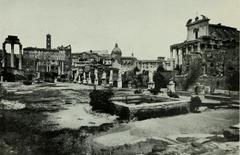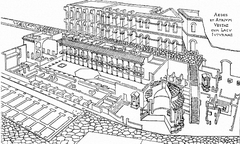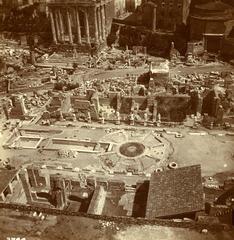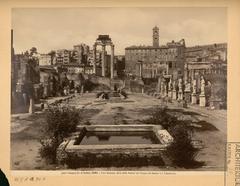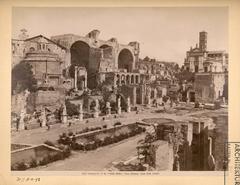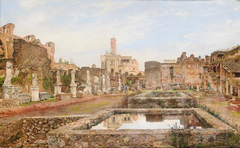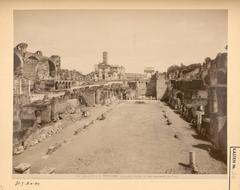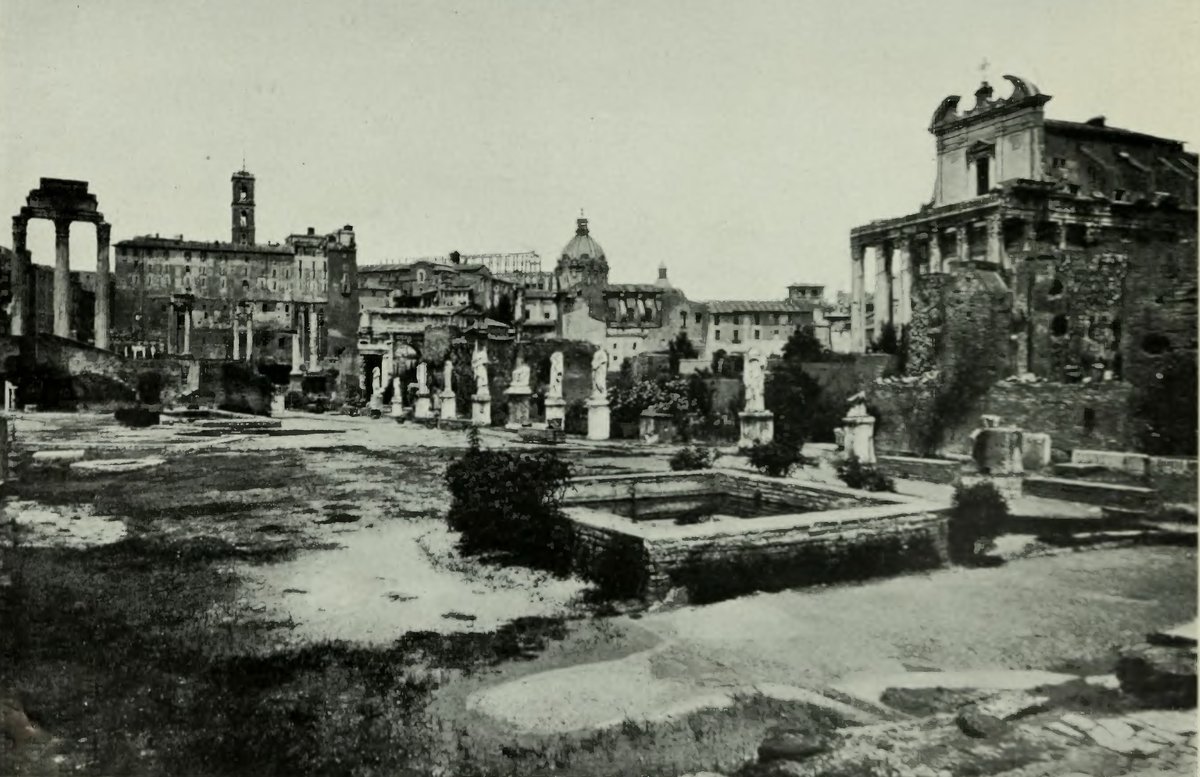
House of the Vestals Rome: Visiting Hours, Tickets, and Historical Significance
Date: 14/06/2025
Introduction
Nestled at the heart of the Roman Forum, the House of the Vestals (Latin: Atrium Vestae) stands as a powerful symbol of ancient Rome’s religious and architectural legacy. Once home to the Vestal Virgins—priestesses tasked with safeguarding the sacred flame of Vesta—this grand complex embodies centuries of myth, civic tradition, and imperial grandeur. From its legendary founding by King Numa Pompilius in the eighth century BCE, through cycles of destruction and restoration, the House of the Vestals reflects both the evolution of Roman society and the pivotal role of women within its sacred sphere.
Today, visitors can explore evocative ruins: courtyards lined with statues, remnants of luxurious living spaces, and the vestiges of advanced Roman engineering. This comprehensive guide provides essential information for your visit, including current opening hours, ticket options, accessibility details, and guidance on nearby attractions. Whether you are a history enthusiast, a cultural traveler, or simply curious about Rome’s past, the House of the Vestals offers an immersive encounter with the city’s spiritual heritage.
Official visitor information and updates can be found at the Parco Archeologico del Colosseo. Consider using audio guides or the Audiala app for a richer, self-guided experience (Sightseeing Tours Italy, Roman Mythology Worldwide).
Historical Origins and Architectural Evolution
Mythical and Early Republican Foundations
The Vestal Virgins’ order is traditionally attributed to Rome’s second king, Numa Pompilius. Their ancient residence began as a simple cluster of huts and a sacred grove, symbolizing the earliest forms of Roman religious practice. Archaeological evidence places the first habitation here in the eighth century BCE.
Development Through the Republic and Empire
By the sixth century BCE, the site saw its first significant stone structures, reflecting the growing importance of the Vestals. The House occupied a strategic position on the Forum’s eastern edge, adjacent to the Regia and the Temple of Vesta.
The Great Fire and Imperial Rebuilding
The catastrophic fire of 64 CE under Emperor Nero destroyed much of the complex. Rebuilt with imperial resources, the House expanded into a three-story residence featuring marble floors, hypocaust heating, sophisticated plumbing, and dedicated service spaces like bakeries and mills. Statues of chief Vestals adorned the central courtyard, underscoring their prominence.
Late Imperial Decline and Repurposing
After pagan cults were outlawed in the late fourth century CE, the House ceased its religious role, later serving imperial and papal officials. Abandonment followed in the medieval era, but the site remained a potent symbol of Rome’s enduring religious traditions.
Practical Visitor Information
Location and Access
Address: Roman Forum, Via della Salara Vecchia, 5/6, 00186 Roma RM, Italy
The House of the Vestals is easily accessed as part of a visit to the Roman Forum and Palatine Hill (Sightseeing Tours Italy, Triphobo).
Visiting Hours
- April to October: 8:30 AM – 7:00 PM (last entry 6:00 PM)
- November to March: 8:30 AM – 5:00 PM (last entry 4:00 PM)
Hours may change on public holidays or due to special events. Always check the official website before your visit (Tickets Rome).
Tickets and Entry
- Combined Ticket: Grants access to the Colosseum, Roman Forum, Palatine Hill, and House of the Vestals; valid for two consecutive days.
- Standard Adult: €16–18 (as of 2025)
- Reduced Rate: For EU citizens aged 18–25
- Free Entry: For children under 18, Rome residents, and certain categories
Tickets are available online or at site entrances. Advance booking is highly recommended (Triphobo).
Accessibility
The archaeological park features uneven terrain and ancient paving stones. Some areas, including parts of the House of the Vestals, may be challenging for those with mobility issues. Comfortable shoes are essential. Refer to official accessibility details on the Parco Archeologico del Colosseo website.
Facilities
- Restrooms and water fountains are available within the Forum.
- No food or drink is sold inside; nearby cafés and restaurants are just outside the site.
Guided Tours and Audio Guides
- Guided tours, including those focused on the Vestal Virgins, are widely available and provide valuable historical context.
- Audio guides and the Audiala app offer multimedia content for self-guided exploration (Sightseeing Tours Italy).
Photography
- Photography is allowed, but tripods and professional equipment may require permission.
- Respect site rules: do not touch or climb on ruins, and stay on marked paths.
Architectural and Archaeological Highlights
Layout and Design
The House of the Vestals is a rectangular complex (about 69 x 28 meters) with a grand entrance and a central peristyle courtyard. Statues of chief Vestals line the portico, and three elongated basins (possibly for ritual purification) punctuate the space.
Residential and Service Areas
- Ground floor: Living quarters, service rooms (mill, oven), administrative offices
- Upper floors: Private bedrooms, storage, study areas
Decorative Elements
- Marble floors and revetments, geometric mosaics, frescoes, and stucco work
- Many original statues of chief Vestals remain on site or are displayed in nearby museums
Archaeological Discoveries
- Portrait statues of Vestals
- Artifacts such as pottery, lamps, and ritual tools
- Inscriptions and a statue of Numa Pompilius
- Gold coins from later periods, indicating continued occupation (Triphobo)
The Vestal Virgins: Roles, Privileges, and Cultural Impact
Social Status and Privileges
Selected as young girls from patrician families, Vestal Virgins served for 30 years, enjoying freedoms rare for women in ancient Rome: property rights, legal independence, and high social honor. Their presence was seen as auspicious, and they could pardon prisoners or condemned individuals (Roman Mythology Worldwide).
Rituals and Symbolism
Their primary duty was to maintain Vesta’s sacred fire, symbolizing Rome’s safety and continuity. Chastity was paramount; violations of vows were severely punished, underscoring the trust and power vested in them (History Skills).
Legacy in Art and Literature
The Vestals inspired classical historians and poets, becoming symbols of virtue and piety in later European culture (History Tools).
Visitor Experience and Travel Tips
- Best Times: Early morning or late afternoon to avoid crowds and heat.
- Duration: Visitors spend about 1–2 hours at the site.
- Nearby Attractions: Temple of Vesta, Regia, Palatine Hill, Colosseum, and Roman Forum.
- Virtual Resources: Interactive maps and virtual tours are available on official platforms.
Frequently Asked Questions (FAQs)
Can the House of the Vestals be visited separately?
No. Entry is included with the Roman Forum combined ticket.
Are guided tours available?
Yes, in multiple languages. Audio guides and informational panels are also provided.
Is the site accessible for people with disabilities?
Some areas are challenging due to uneven ground, but assistance is available and improvements continue.
Are restrooms or food available inside?
Restrooms are present, but food and drink are not sold within the archaeological area.
Are virtual tours available?
Yes, select platforms and the official website offer virtual tours.
Summary and Final Tips
The House of the Vestals encapsulates the intersection of religion, gender, and power in ancient Rome. Its well-preserved remains offer a window into the lives of some of the most influential women of antiquity. Planning your visit ahead—checking official hours, booking tickets, and considering a guided or audio tour—will maximize your experience. Pair your visit with nearby monuments for a comprehensive journey through Rome’s ancient heart.
Further planning and official resources:
- Parco Archeologico del Colosseo
- CoopCulture - Colosseum Tickets
- Sightseeing Tours Italy
- Roman Mythology Worldwide
- History Skills
- Revealed Rome
- Triphobo
- Tickets Rome
- History Tools
Enjoyed this guide?
Download the Audiala app for personalized travel tips, follow us on social media for the latest updates, and explore our other articles on Rome historical sites to plan your perfect trip!
